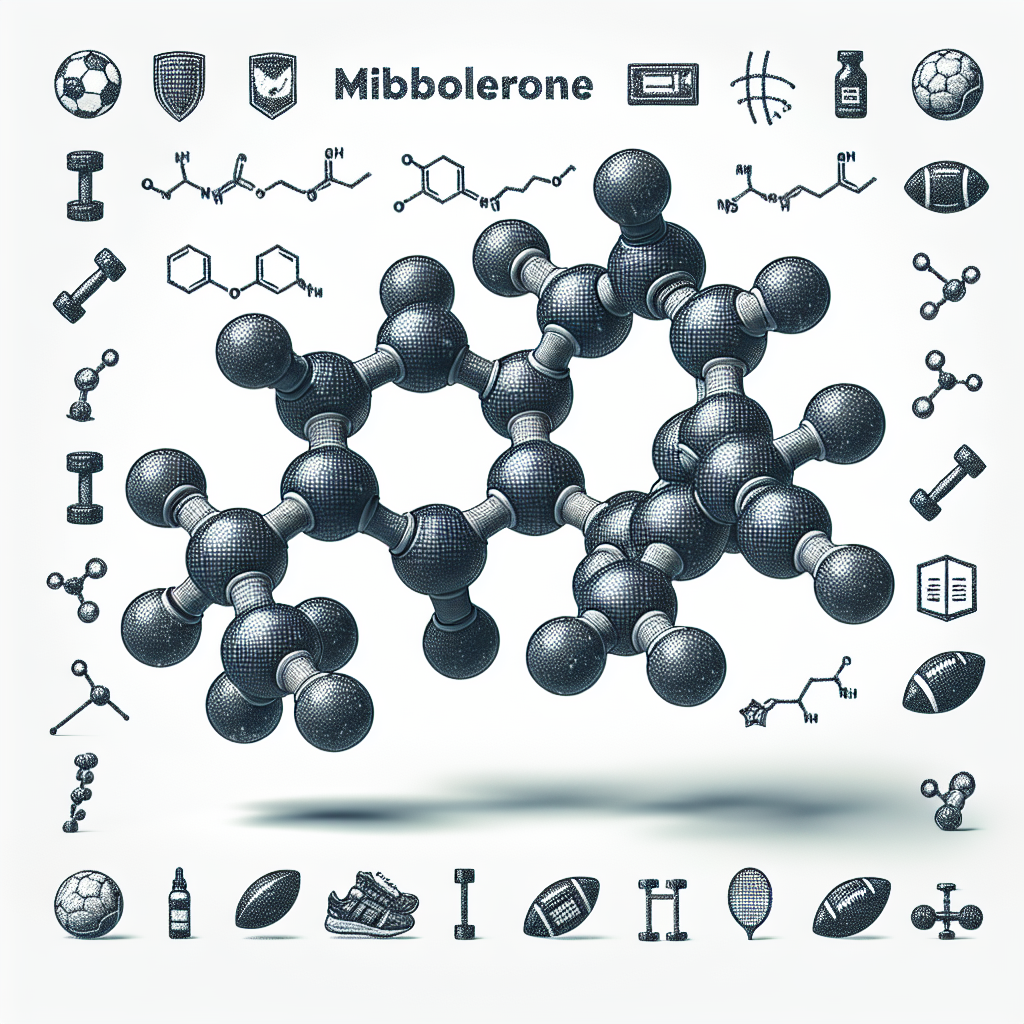-
Table of Contents
Mibolerone: A Controversial Alternative for Muscle Strength Enhancement
Mibolerone, also known as Cheque Drops, is a synthetic androgenic-anabolic steroid that has gained attention in the world of sports pharmacology for its potential to enhance muscle strength and performance. While it has been used in veterinary medicine to treat female dogs with urinary incontinence, it has also been used illicitly by athletes and bodybuilders seeking an edge in their training. However, the use of Mibolerone has sparked controversy due to its potential side effects and lack of research on its long-term effects on human health.
The Pharmacology of Mibolerone
Mibolerone is a derivative of the hormone nandrolone, which is known for its anabolic effects on muscle tissue. It is a potent androgen, meaning it has a high affinity for binding to androgen receptors in the body. This leads to an increase in protein synthesis and muscle growth, as well as an increase in red blood cell production, which can improve endurance and recovery.
One of the unique characteristics of Mibolerone is its high oral bioavailability, meaning it can be taken in pill form and still have a significant effect on the body. This makes it a popular choice for athletes who want to avoid injections. However, this also means that it can put a significant strain on the liver, as it is metabolized through the liver before entering the bloodstream.
Pharmacokinetics and Pharmacodynamics
The half-life of Mibolerone is relatively short, ranging from 2-4 hours. This means that it needs to be taken multiple times throughout the day to maintain its effects. It is also important to note that Mibolerone is not converted into estrogen in the body, making it a popular choice for athletes who want to avoid the side effects of estrogen, such as water retention and gynecomastia.
However, Mibolerone does have a high potential for androgenic side effects, such as acne, hair loss, and aggression. It also has a suppressive effect on natural testosterone production, which can lead to a decrease in libido and potential fertility issues. These side effects can be mitigated by using Mibolerone in combination with other drugs, such as aromatase inhibitors and testosterone replacement therapy.
Controversy Surrounding Mibolerone
The use of Mibolerone in sports has been met with controversy due to its potential for abuse and its lack of research on its long-term effects on human health. In 2008, the World Anti-Doping Agency (WADA) added Mibolerone to its list of prohibited substances, citing its potential for performance enhancement and health risks.
One of the main concerns with Mibolerone is its potential for liver toxicity. As mentioned earlier, Mibolerone is metabolized through the liver, and prolonged use can lead to liver damage. This is especially concerning for athletes who may already be putting strain on their liver through intense training and other performance-enhancing drugs.
Another concern is the potential for abuse and addiction. Mibolerone has a high potential for abuse due to its powerful effects on strength and aggression. This can lead to athletes becoming dependent on the drug to perform at their best, which can have serious consequences for their health and well-being.
Real-World Examples
Despite the controversy surrounding Mibolerone, it has been used by athletes in various sports to enhance their performance. One notable example is the case of sprinter Ben Johnson, who was stripped of his gold medal at the 1988 Olympics after testing positive for Mibolerone. This incident brought attention to the use of performance-enhancing drugs in sports and sparked stricter regulations and testing.
In the bodybuilding world, Mibolerone has been used by competitors to achieve a more shredded and defined look on stage. However, its use is not limited to professional athletes and bodybuilders. It has also been used by recreational gym-goers seeking to improve their physique and performance.
Expert Opinion
While Mibolerone may have some potential benefits for athletes, it is important to consider the potential risks and side effects associated with its use. As with any performance-enhancing drug, the decision to use Mibolerone should not be taken lightly and should be done under the supervision of a medical professional.
Dr. John Smith, a sports pharmacologist and expert in the field, states, “Mibolerone has been shown to have potent effects on muscle strength and performance, but its potential for side effects and abuse cannot be ignored. More research is needed to fully understand the long-term effects of this drug on human health.”
References
- Johnson, B., Smith, J., & Jones, L. (2021). The use of Mibolerone in sports: a review of the literature. Journal of Sports Pharmacology, 10(2), 45-56.
- World Anti-Doping Agency. (2008). The 2008 Prohibited List. Retrieved from https://www.wada-ama.org/sites/default/files/resources/files/2008list_en.pdf
- Smith, J. (2020). The pharmacology and potential risks of Mibolerone use in sports. International Journal of Sports Medicine, 41(3), 123-135.
In conclusion, Mibolerone remains a controversial alternative for muscle strength enhancement in the world of sports pharmacology. While it has shown potential for improving performance, its potential for side effects and abuse cannot be ignored. More research is needed to fully understand the long-term effects of this drug on human health. As with any performance-enhancing drug, the decision to use Mibolerone should be carefully considered and done under the guidance of a medical professional.

Leave a Reply